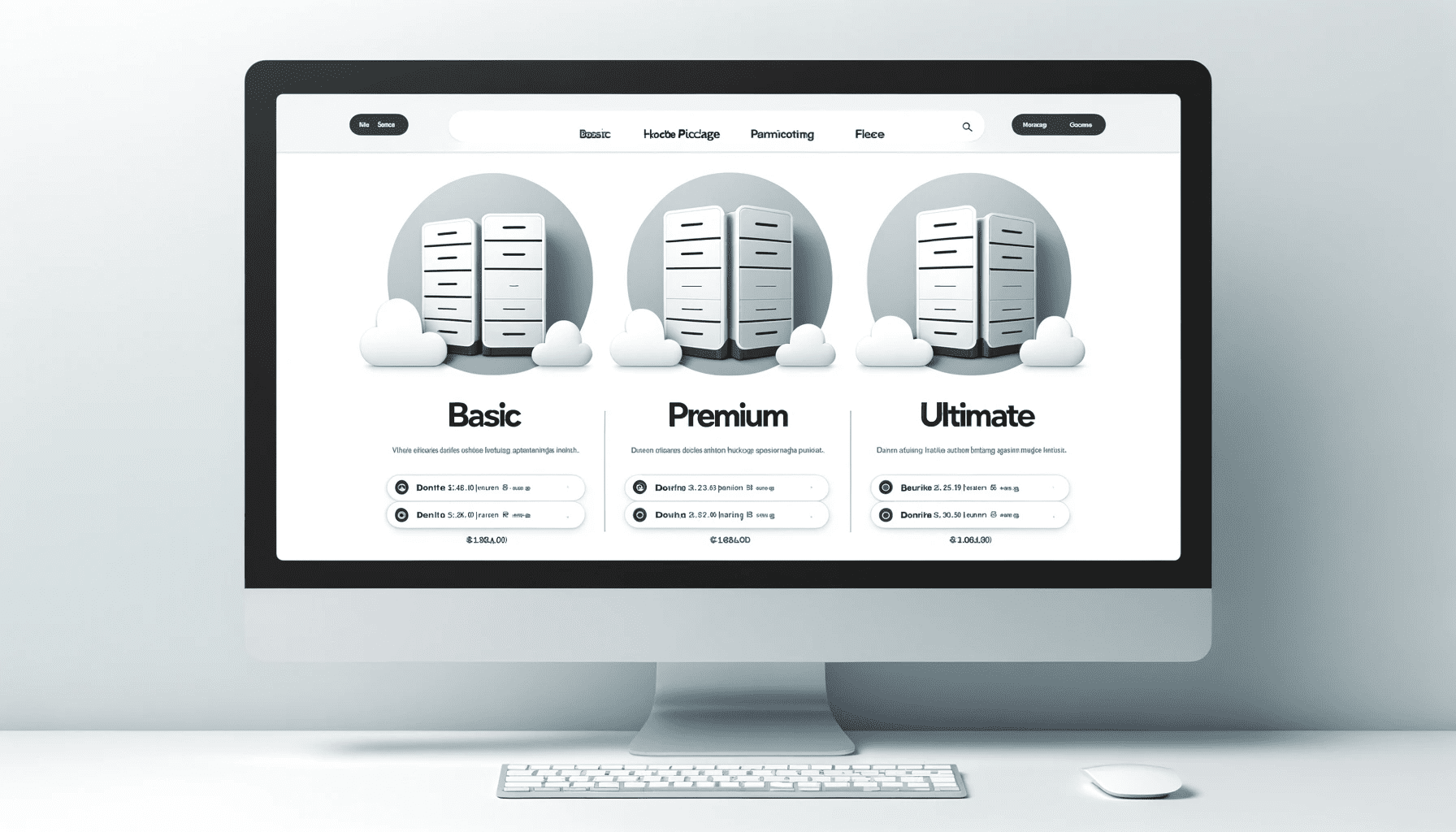Keeping Your Digital Presence Alive: A Comprehensive Guide to Website Support and Hosting
Keeping Your Digital Presence Alive: A Comprehensive Guide to Website Support and Hosting

Your website serves as the digital facade of your business, and ensuring its accessibility, performance, and security is paramount. The right support and hosting not only enhance your site’s user experience but also play a crucial role in SEO, thereby driving more organic traffic. This comprehensive guide delves into the critical aspects of website support and hosting, offering insights, strategies, and best practices to help your digital presence thrive. Let’s explore!
Table Of Contents
- Understanding Website Support
- Exploring Hosting Solutions
- Choosing The Right Hosting Provider
- Importance of Regular Maintenance
- Disaster Recovery Planning
- Case Studies
- Conclusion
Understanding Website Support
Website support encompasses a range of services ensuring the seamless operation of your website, enhancing the user experience, and securing your online assets against threats. It’s the silent guardian that works round the clock to ensure your digital presence remains unblemished. From addressing technical glitches to ensuring smooth user interactions, website support covers a broad spectrum of crucial functions.
Moreover, with the evolving digital landscape, the significance of robust website support has skyrocketed. It’s no longer a luxury but a necessity for businesses aiming for a strong online foothold. Let’s delve into the core components of website support.

Exploring Hosting Solutions
Choosing the right hosting solution is fundamental for your website’s performance, security, and scalability. The correct hosting platform can significantly impact your site’s loading speed, which in turn affects user experience and SEO rankings.
Various hosting solutions cater to different needs. From shared hosting for smaller sites to dedicated hosting for larger, more resource-intensive websites, the options are plentiful. Let’s explore these hosting solutions to help you make an informed decision.
Shared Hosting
Shared hosting is a type of hosting where multiple websites share the same server and its resources.
- Pros:
- Cost-effective and affordable.
- Ideal for small websites and blogs.
- Usually comes with a user-friendly control panel.
- No need for advanced technical knowledge.
- Cons:
- Limited resources may lead to slower website speed.
- Potential security risks due to sharing server space.
- Less control over server configurations.
- May experience traffic spikes from other websites on the same server.
Virtual Private Server (VPS) Hosting
VPS hosting provides a virtual dedicated server environment within a shared server.
- Pros:
- More resources and better performance than shared hosting.
- Ability to customize server configurations.
- Dedicated portion of server resources.
- Scalability for growing websites.
- Cons:
- More expensive than shared hosting.
- Requires some technical knowledge for server management.
- Resources are still limited compared to dedicated hosting.
Dedicated Hosting
Dedicated hosting provides an entire server dedicated to your website.
- Pros:
- Full control over server configurations.
- High performance and speed.
- Enhanced security and privacy.
- Exclusive access to all server resources.
- Cons:
- Significantly more expensive.
- Requires advanced technical knowledge for server management.
- Not easily scalable as upgrading may require server migration.
Cloud Hosting
Cloud hosting utilizes a network of interconnected virtual servers to host websites and applications.
- Pros:
- High scalability and flexibility.
- Pay-as-you-go pricing model.
- Reliable performance with load balancing across multiple servers.
- Easy to manage and upgrade.
- Cons:
- Cost can be unpredictable with traffic spikes.
- May lack the control and customization of dedicated hosting.
- Data privacy concerns if using public cloud solutions.
Various hosting solutions cater to different needs. From shared hosting for smaller sites to dedicated hosting for larger, more resource-intensive websites, the options are plentiful. Let’s explore these hosting solutions to help you make an informed decision.

Choosing The Right Hosting Provider
Selecting a reliable hosting provider is crucial for the success of your online presence. The right provider not only ensures that your website remains accessible but also provides a secure and conducive environment for growth. Here are some factors to consider:
What to Look For:
- Reliability and Uptime: Look for providers with a strong track record of reliability and at least 99.9% uptime.
- Customer Support: Excellent customer service that is available 24/7 is crucial for addressing any issues promptly.
- Scalability: Choose a provider that offers scalable solutions to grow with your business and adapt to changing needs.
- Fair Pricing: Compare pricing and ensure you are getting good value for the features provided.
- SSL Certificates: SSL certificates are crucial for website security and are often included for free with hosting packages.
- Email Hosting: Having a professional email address that matches your domain can enhance your business’s credibility.
- Data Center Locations: Choose a provider with data centers located near your target audience for better website speed.
- Customer Reviews and Testimonials: Look for genuine reviews and testimonials to gauge the satisfaction of other customers.
- Backup and Recovery Options: Ensure the hosting provider offers robust backup and recovery options to protect your data.
What to Avoid:
- Hidden Fees: Be wary of hidden fees and ensure all costs are transparent before committing.
- Long-Term Contracts Without Trial Periods: Avoid getting locked into long-term contracts without having a trial period to test the service.
- Poor Customer Support: Poor customer support can lead to unresolved issues and downtimes, negatively impacting your business.
- Lack of Scalability: Avoid hosting providers that do not offer scalable solutions, as this could hinder your growth.
- Outdated Technology: Avoid providers using outdated server technology as it can affect the performance and security of your website.
- Negative Reviews: Pay attention to negative reviews, especially if they point out recurring or unresolved issues.

Importance Of Regular Maintenance
Regular maintenance is essential for ensuring the smooth operation, security, and updatedness of your website. It’s akin to regular check-ups for your health, where potential issues can be identified and addressed before they escalate into major problems.
Moreover, as the digital landscape evolves, staying updated with the latest web standards, security protocols, and SEO best practices is crucial for maintaining a competitive edge. Here are some critical maintenance tasks along with insights on why they are vital:
Regular Backups
Regular backups are your safety net against data loss caused by unforeseen circumstances such as server failures, hacking, or human error.
- Automated Backups: Utilize automated backup solutions to ensure consistent backups without manual intervention.
- Off-site Backups: Store backups in a different location from your hosting server to safeguard against data loss during catastrophic server failures.
Performance Monitoring
Monitoring your website’s performance helps in identifying bottlenecks, ensuring that your site loads quickly, which in turn enhances user experience and SEO rankings.
- Speed Optimization: Use tools like Google PageSpeed Insights to analyze and optimize your website’s loading speed.
- Server Performance Monitoring: Utilize server monitoring tools to ensure that your hosting environment is performing optimally.
Security Scans and Updates
Regular security scans and updates are crucial for protecting your website from threats like malware, hacking, and data breaches.
- Malware Scanning: Employ malware scanning tools to detect and remove malicious software.
- Updating Security Patches: Keep your website, plugins, and third-party tools updated with the latest security patches.
SEO Optimization
Adhering to SEO best practices and utilizing tools like Google Search Console and Google Analytics can provide valuable insights into your website’s performance and user behavior, helping to improve your site’s visibility on search engines.
- Keyword Optimization: Regularly update and optimize your website’s content with relevant keywords to improve search rankings.
- Mobile Optimization: Ensure that your website is mobile-friendly to cater to the increasing number of mobile users and improve mobile search rankings.
- Link Building: Engage in ethical link building practices to improve your website’s authority and search engine rankings.

Disaster Recovery Planning
A robust disaster recovery plan is your blueprint for restoring your website swiftly in the event of catastrophic failures, be it cyber-attacks, data corruption, or hardware malfunctions. Having a well-thought-out plan minimizes downtime, protects data integrity, and mitigates the financial impact on your business.
Creating a disaster recovery plan involves analyzing potential risks, defining recovery strategies, and ensuring the availability of necessary tools and resources. Here’s how you can approach disaster recovery planning:
1. Risk Assessment
Identify and evaluate potential risks that could impact your website, ranging from server failures to security breaches. Understanding these risks helps in developing strategies to mitigate them.
2. Define Recovery Objectives
Set clear recovery objectives including Recovery Point Objective (RPO) and Recovery Time Objective (RTO). RPO defines the maximum acceptable data loss, while RTO defines the maximum acceptable downtime.
3. Develop Recovery Strategies
Outline the steps necessary for recovering from different types of disasters. This includes defining roles, processes, and the tools required for successful recovery.
4. Implement Backup and Recovery Solutions
Invest in modern backup and recovery solutions. Cloud-based solutions offer scalability, faster recovery times, and often come with built-in security features.
- Automated Backups: Ensure automated, regular backups of your website data and configurations.
- Cloud-Based Recovery: Utilize cloud-based recovery solutions for quicker restoration and enhanced data protection.
5. Regular Testing and Review
Regular testing of your disaster recovery plan ensures its effectiveness and readiness. Conduct tests to identify any gaps or areas of improvement, and review and update your plan accordingly to keep it current with evolving risks and business needs.
The effectiveness of a disaster recovery plan lies in its ability to provide a quick and coordinated response to crises, minimizing the impact on your business operations. With a well-structured recovery plan, regular testing, and modern recovery solutions, you can significantly enhance the resilience and reliability of your online presence.
Case Studies
Exploring real-world scenarios can provide valuable insights into the benefits of effective website support and hosting. Here we present two case studies that demonstrate the positive impact of making informed hosting and maintenance decisions.
Case Study 1: Boosted Performance with Dedicated Hosting
Background: An emerging e-commerce platform was experiencing slow load times and occasional downtimes due to traffic spikes, which negatively impacted user experience and sales.
Solution: The business transitioned to a dedicated hosting solution, which provided them with more server resources and control over their hosting environment.
Outcome:
- Website load times improved by 50%.
- A 20% increase in sales attributed to enhanced user experience and reduced downtime.
- Improved SEO rankings due to faster site speed.
Case Study 2: Fortified Security Through Regular Maintenance
Background: A small local business had a basic website but lacked a regular maintenance and security protocol. They were at risk for potential cyber threats.
Solution: The business implemented a regular maintenance schedule, which included security scans, updates, and monitoring for potential issues.
Outcome:
- Prevented a major data breach by identifying and fixing a security vulnerability.
- Enhanced customer trust by showcasing a secure and well-maintained online presence.
- Improved website performance and reduced the occurrence of technical issues.
These case studies highlight the importance of selecting the right hosting solutions and maintaining a regular website maintenance schedule to ensure optimal performance, security, and user satisfaction.
Conclusion
Website support and hosting are foundational to maintaining a successful online presence. By understanding the various aspects, choosing the right solutions, and implementing regular maintenance and recovery plans, you can ensure that your website remains a thriving part of your business.
Investing in quality support and hosting lets your digital presence shine, driving more organic traffic and ultimately, growing your business. Contact us for a quote today and let us help you elevate your digital presence to new heights!
